Re-engagement email examples: How to win back subscribers
By Pam Neely June 21, 2024
Have you noticed a significant number of your email list subscribers are no longer interacting with your content or following your calls to action? Then it may be time to start a re-engagement email campaign!
This can be a super effective email marketing strategy for winning back inactive subscribers.
After all, one study indicates that the average email list decay rate, which is the percentage of subscribers who become inactive, is between 22% and 30% per year.
This means that, unless you’re cleaning your email list regularly, you’re likely sending a lot of messages into the void, never to be seen again.
However, with re-engagement emails, you can start winning back some of those inactive subscribers. To be successful, though, you’ll need to keep some best practices in mind.
So, in this article, we’ll explore how to write win-back emails. We’ll also provide examples of some effective re-engagement email campaign strategies, from one-off surveys and free resources to entire email sequences.
What is a re-engagement email?
A re-engagement email, also called a “win-back email”, is a message you send to subscribers who have become inactive.
These emails aim to rekindle the interest of people who have not made a purchase or interacted with your brand for a while.
Re-engagement email campaigns are a great strategy for sparking the interest of inactive subscribers before removing them from your mailing list. After all, emailing unresponsive subscribers with messages isn’t helping them or your business.
Before saying goodbye, however, a win-back email offers one final opportunity to reconnect and rebuild your customer relationship.
Ultimately, your goal is to re-establish a connection with those who seem to have lost interest in your products, services, or content.
Here is an example re-engagement email from the newsletter pros at Marketing Brew. While the three-week inactivity timeline is pretty tight by most industry standards, they do a great job of ensuring their list is truly engaged with their content.
This way, they keep their email list clean, and ensure most of their messages aren’t getting lost in recipients’ spam folders.
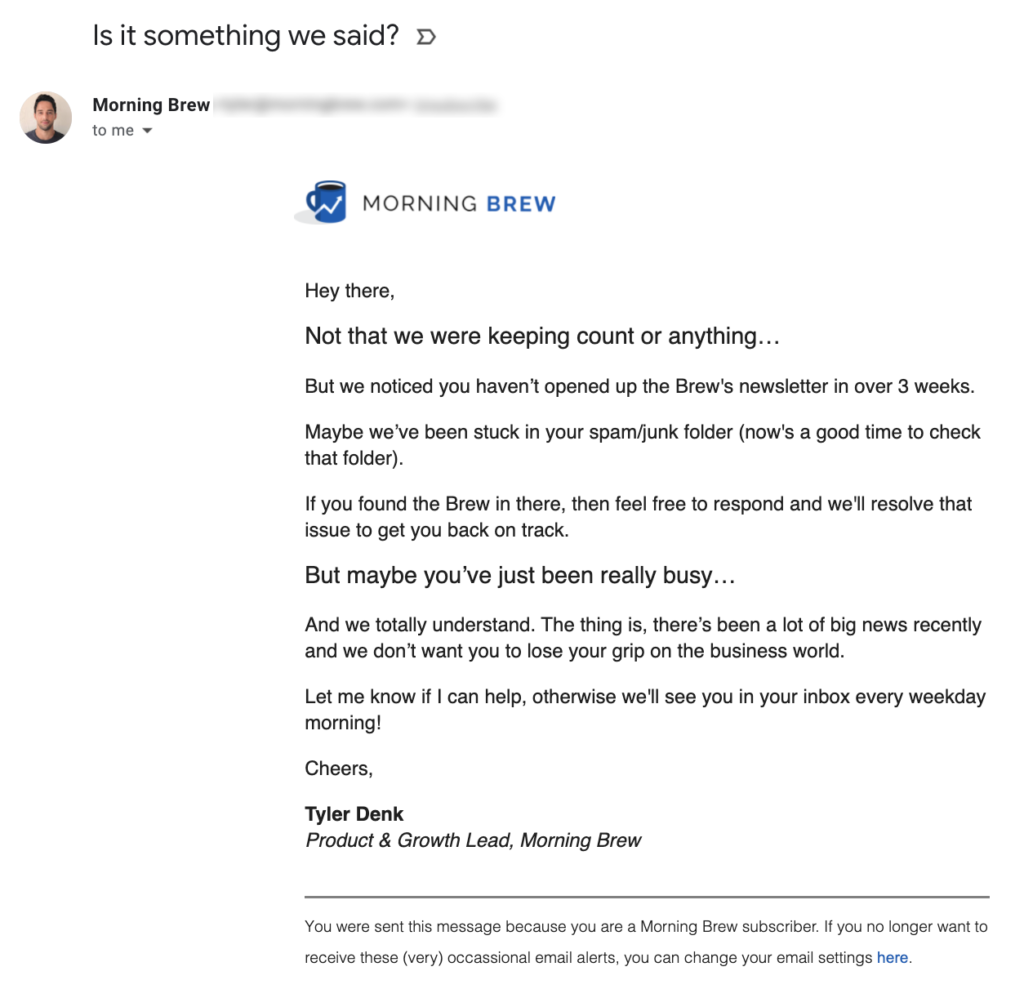
How effective are re-engagement emails?
While re-engagement email campaigns are a great way to win back subscribers, you can’t expect every inactive subscriber to become active again.
Most email win-back campaigns have a success rate of 14% up to 29% in the best-case scenario.
Several email marketing studies have found that sending a series of emails may be more effective than sending just a single email. A re-engagement sequence of three emails appears to be the sweet spot.
One recent study found that several different tactics will work, but no one tactic significantly outperformed the others.
Later on, we’ll discuss how each of the methods below work, as well as provide a few additional examples. We’ll also tell you how to set up an effective re-engagement email sequence.
Remember though, the method that works best for your business depends on the needs and interests of your unique audience.
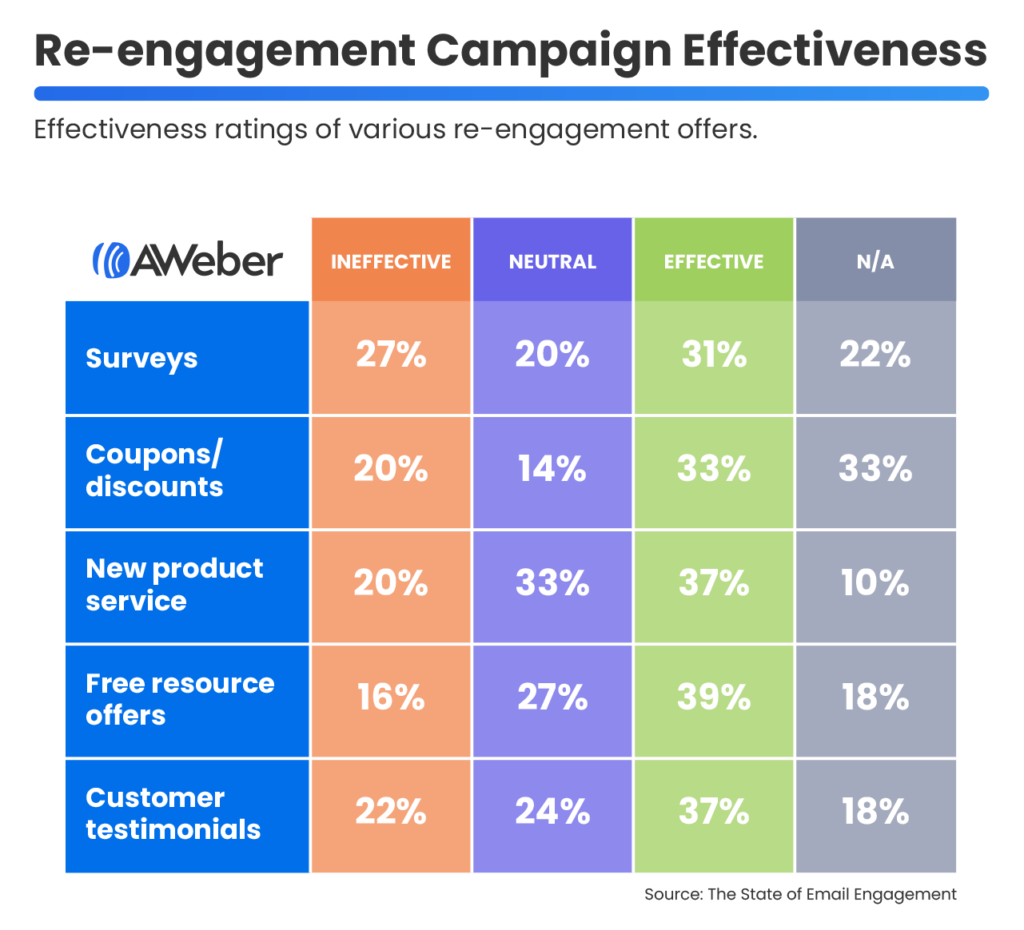
How create a re-engagement email
The goal of your re-engagement email campaign is to get people interested in your emails again.
So, every element of your email – the subject line, the content, and the call-to-action – needs to support that goal.
Re-Engagement email subject lines
For re-engagement email subject lines, the best ones specifically reference your goal: to win back your subscribers!
Here is an example of an email from Tomasz Borys at Kissmetrics:

You can also take a more personal approach, like this email from Threadless:

Both subject lines work well. However, they each grab the reader’s attention in different ways.
A simple “We miss you!” lets the subscriber know that you appreciate their readership. It also feels more conversational.
On the flip side, “Do you still want updates from us?” is direct and inquisitive. It tells the subscriber that you care about their time and want to make sure they get something out of the relationship.
For more inspiration, consider reviewing your past emails to see what’s working for your specific audience. Look for common themes like subject line length and tone to see what tends to work best for your target audience.
You can also try using personalization, like including your subscribers’ first names in the subject line. It’s no secret that personalization helps you connect with your subscribers and stand out a little more in the inbox.
For example, the email from Threadless could have gone one step further by saying, “We miss you, Sam!”
Since these details depend on what your audience responds to, try testing different variations and find that sweet spot.
Re-engagement email content
Most re-engagement emails’ content is short – generally just two or three paragraphs. All you need to do is to make the purpose of your email clear: “Do you still want to get emails from us?”
Then, you might consider explaining the value your emails provide.
Remember, these are people who signed up to receive messages from you but at some point stopped reading.
They wanted to hear from you before, so how can you get them re-interested in what you have to say?
Ask yourself a few questions:
- What did my subscribers sign up to receive originally?
- Am I continuing to send them content based on their original expectations?
- Did I change anything in my email strategy that might have caused them to stop engaging with my content?
- What can I offer to pique their interest again?
Once you have those answers in mind, it’s time to start writing your email.
Here’s an example of a re-engagement email we sent to our inactive blog newsletter subscribers:
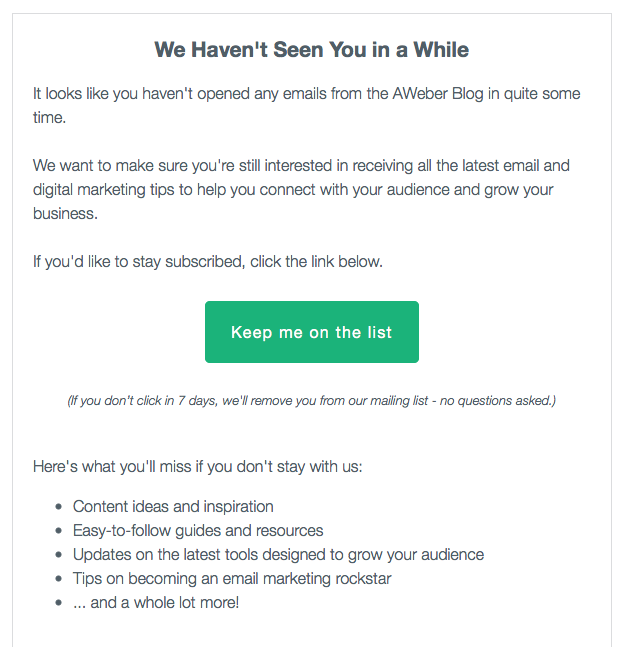
The format is simple, and it makes a good template for any re-engagement email:
- You haven’t opened any emails from us in a while
- We want to make sure you’re still interested
- Click this button to stay on the list
- Here’s what you can expect if you remain on the list
That’s all you have to say in a re-engagement email–just one sentence and a few bullet points. After all, the shorter your email is, the more likely people are to read it and click the button.
Getting inactive subscribers up to speed might also help get them re-interested in your content. So, consider adding a short bulleted list of your recent “greatest hits,” such as:
- Products
- Content
- Promotions
Re-engagement email incentives
Speaking of promotions, offering an incentive, like a white paper or coupon code, might also help you re-engage subscribers.
If you hooked them onto your list with a piece of content in the past, consider how you might be able to repeat that success during your re-engagement email campaign.
Check out this example from Paperworks, a stationary and premium paper provider:
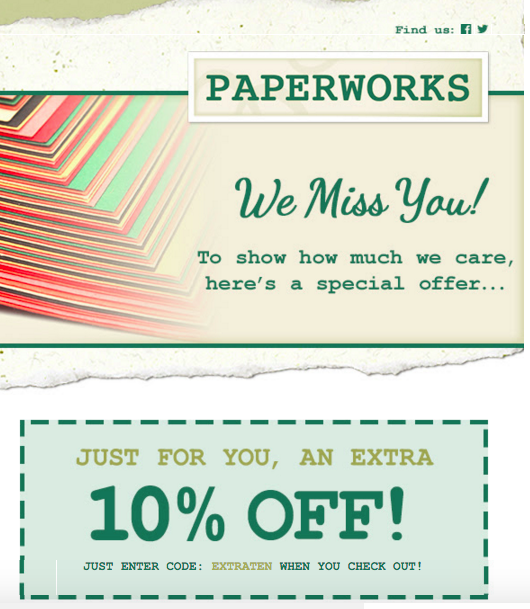
Offering a special discount is a great way to get subscribers interested in your emails again.
Not only are you giving your subscribers something in exchange for their time and attention, but you might even get another sale out of it as well.
Re-engagement email feedback
To help you learn more about why subscribers grew disinterested in your content, asking them for specific feedback could help fill in the gaps. For example:
- Was there something you could have done better for these subscribers?
- What made them stop engaging in the first place?
Asking these questions directly can help you figure out exactly where you can improve your email marketing strategy.
Additionally, if you make a subscriber feel like their opinion is truly valued, they may want to stick around. Plus, this will give you valuable insight into their needs that you wouldn’t get anywhere else.
As you get feedback and notice common themes, you can implement their suggestions in the future.
Re-engagement email call to action
The whole point of your email is to prompt subscribers to take an action, so make sure your emails have a call to action that is bold and clear.
Generally, you’ll want to limit yourself to one call to action in order to increase your click-through rate. However, there are exceptions to this rule.
Ultimately, your CTA should make it easy for recipients to:
- Stay on or opt out of your list
- Learn more about a product or service
- Download an incentive
For example, check out this email and CTA from Grammarly:
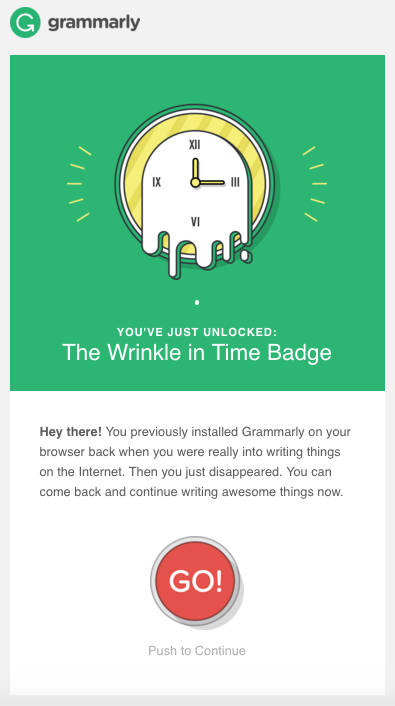
While having one call to action is the classic approach, some re-engagement emails examples also include an unsubscribe link.
For instance, take a look at this email from a PEW, a non-profit organization:

Finally, some re-engagement emails even let subscribers choose to get emails less often, like the example below.
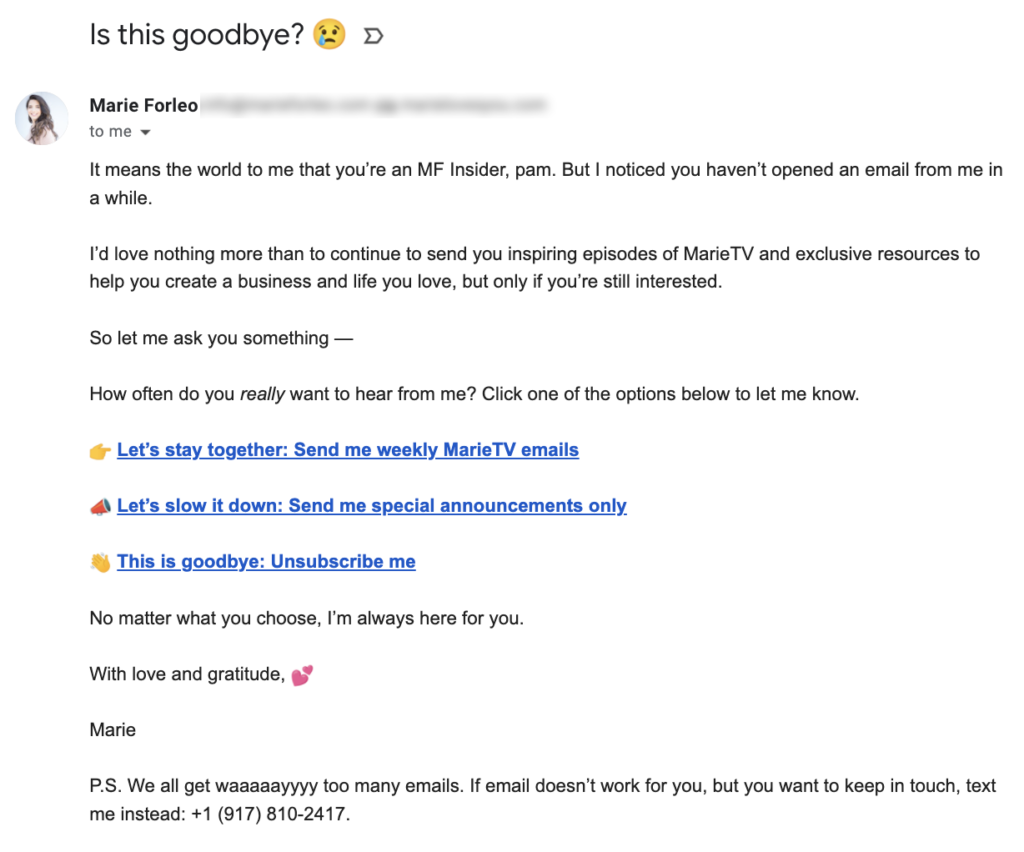
7 Re-engagement email examples
Now that you’ve got a good idea of what goes into an effective win-back email, let’s look at some re-engagement email examples.
The following ideas are great ways to get customers interested in your brand again.
1. Surveys
If your subscribers aren’t responding to what you’ve been sending, try asking them what they would like to get from you. After all, this can help you better understand your audience’s interests and preferences.
For example, you might send a re-engagement email with the subject line “We miss you! Tell us how we can improve.” Then, for your call to action, include a link to a brief survey. Consider asking questions about:
- Their favorite types of content
- Products they’re interested in
- How often they’d like to hear from you
Ultimately, this feedback can help guide your future email marketing campaigns, as well as show subscribers you value their opinions.

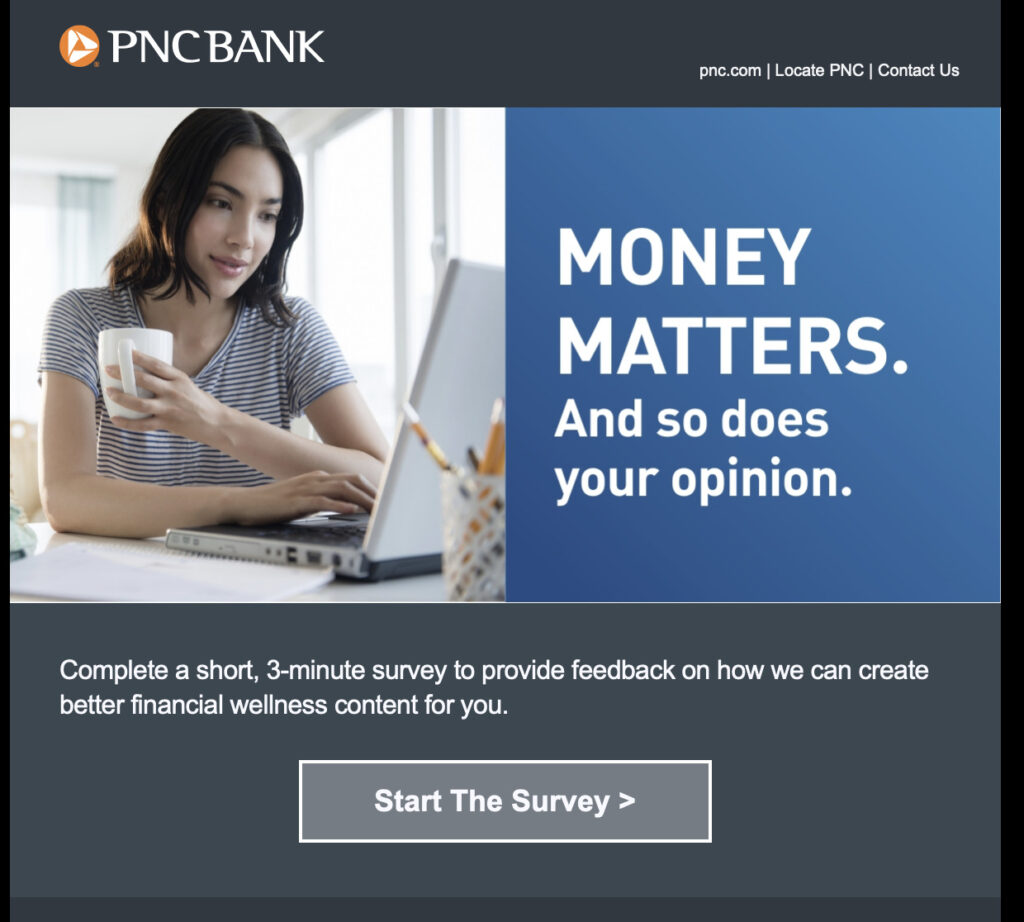
2. Coupons and discounts
If you’re in ecommerce, the classic way to win back inactive customers is to send them a juicy discount coupon.
Consider making this a dollar off discount rather than a percent off discount. One study of win-back campaigns found that dollar off discounts activated more subscribers.
For instance, you could send an email with the subject line “We miss you! Here’s $10 off your next purchase.”
Then, in the content of your email, be sure to include your discount code and a call to action directing subscribers to your store.
You might also think about highlighting new or popular products to entice them even more.

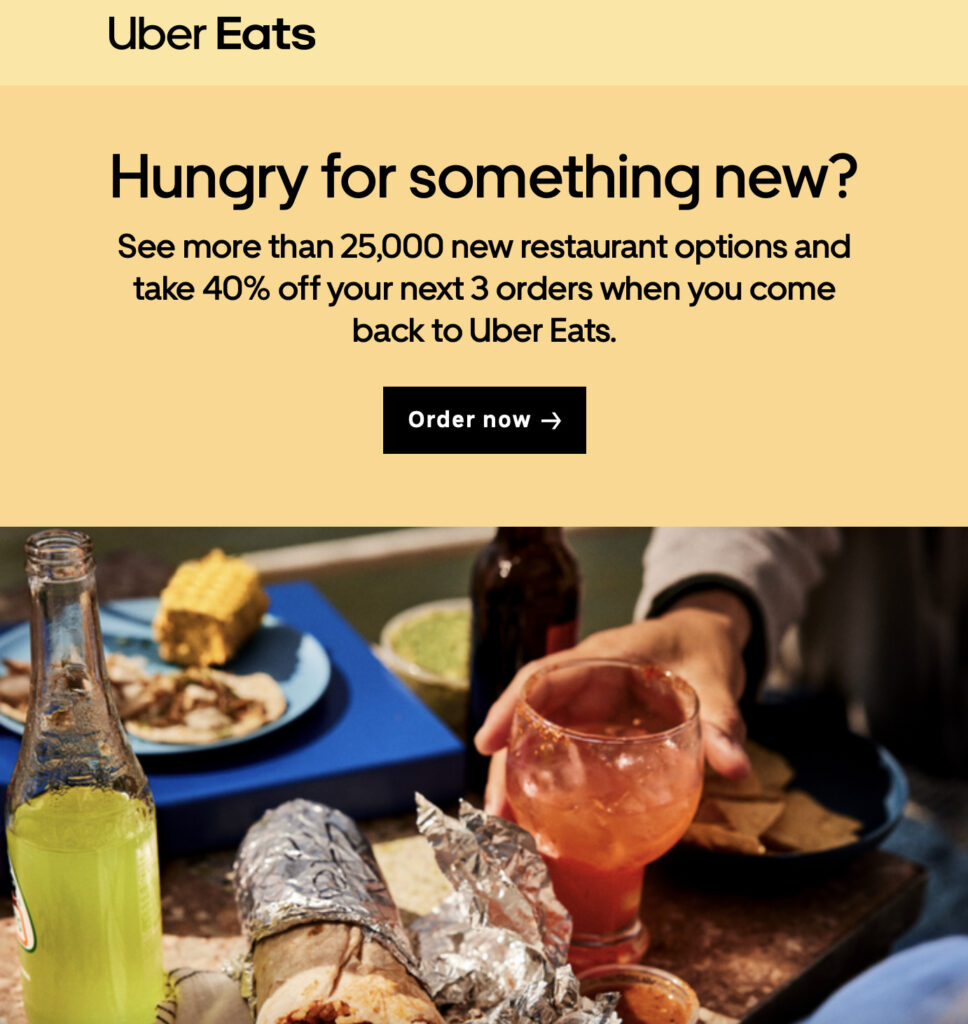
3. New products and services announcements
Announcements are ideal emails to send out if you haven’t mailed to your list in a few months. They’re a great opportunity to let recipients know about new products or services you’re offering.
For example, consider sending a re-engagement email with the subject line “Check out our new arrivals!”
Then, in your email content, be sure to showcase your latest and greatest products with high-quality images, and include a CTA to your online store.
By showing off your most recent arrivals, you can recapture the interest of customers who’ve grown tired of your old line of products.

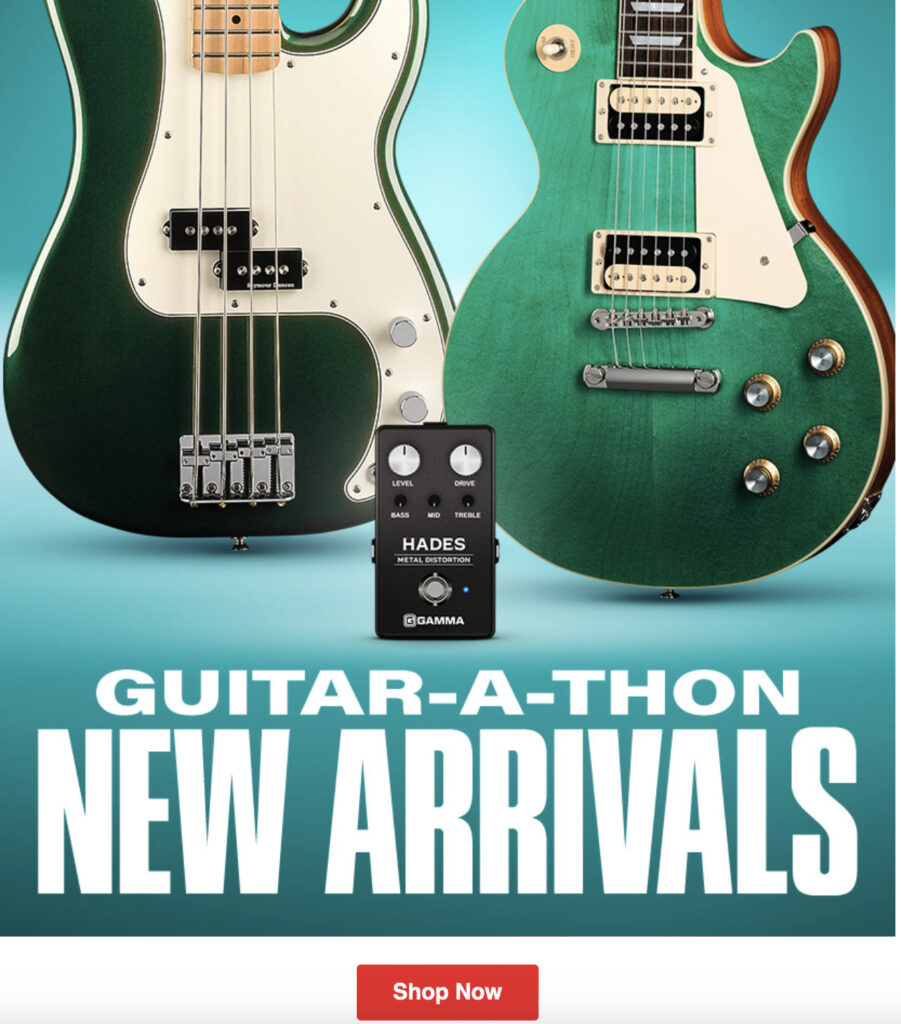
4. Free resources
Free resources are also excellent to send if you haven’t emailed your list in awhile.
A high-value digital resource, like an ebook or a course, can be a great way to demonstrate that it’s worth their time to be on your list.
For instance, consider using the re-engagement email subject line “Exclusive free ebook just for you!” and provide a link to the download.
You should also be sure to highlight the value recipients will gain from the resource, reinforcing the value they’ll get if they remain active subscribers.

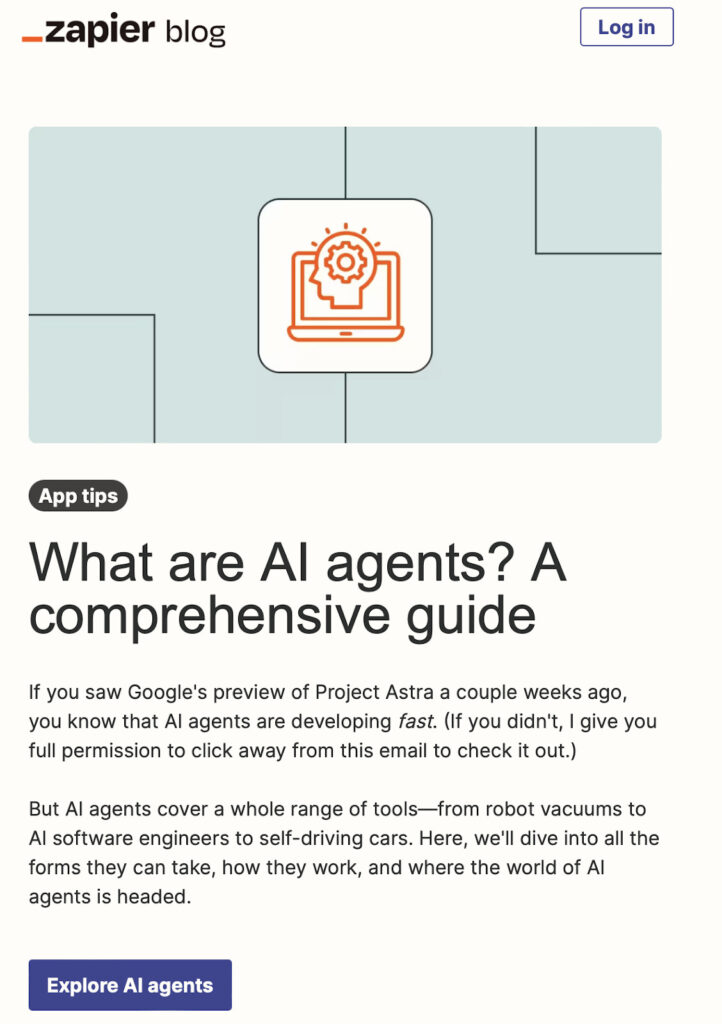
5. Customer testimonials
You can use customer testimonials with other types of content mentioned above. For instance, share a few testimonials about a new service you have.
Think about using a subject line like “See what others are saying about our new service!” and include direct quotes from customers.
This strategy can be especially effective in combination with some of the others listed above.
For example, including testimonials with a new service announcement or special discount can build trust and credibility while encouraging inactive subscribers to re-engage.


6. Limited time offers
Another great way to win back subscribers is by inducing a sense of urgency in your emails.
For instance, you might offer a limited-time discount or promotion to encourage recipients to take action quickly.
Consider using a subject line like “Limited time offer! $10 off just for you,” and include a countdown timer or specific end-date.
By inducing a sense of urgency, you can get customers to take action quickly.

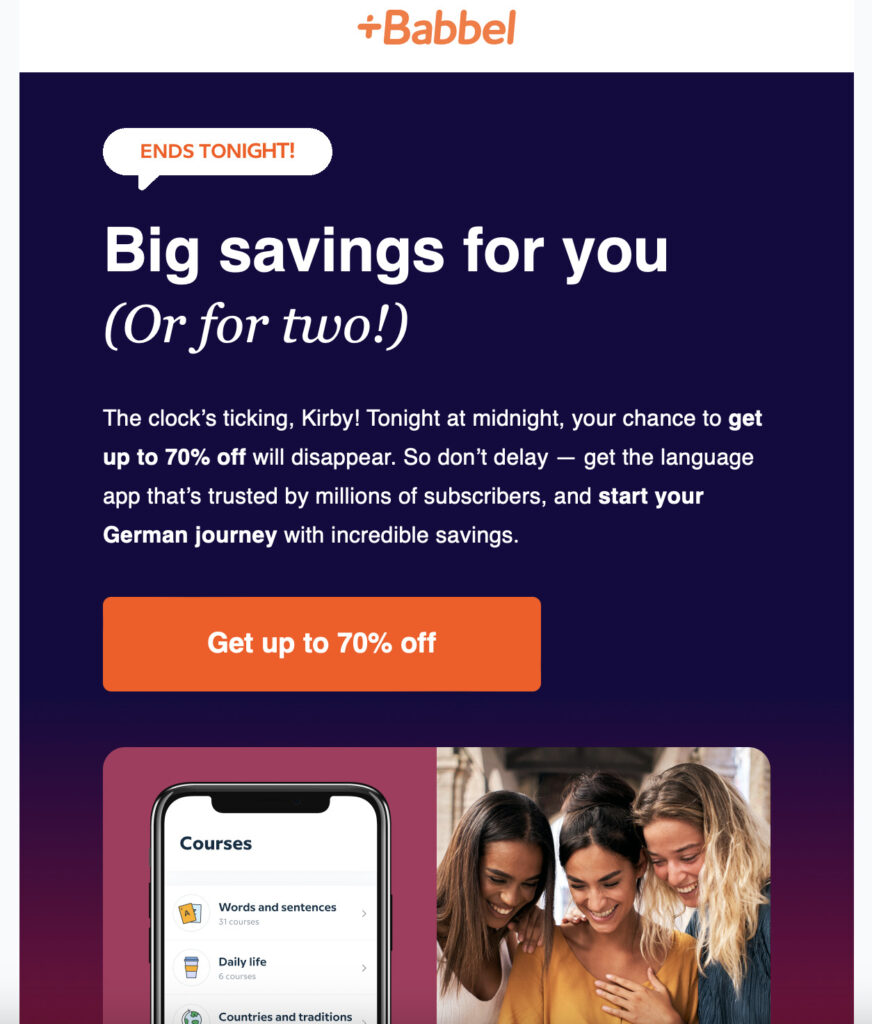
7. Resubscription Offers
Re-subscription offers can be a great incentive to get subscribers interested in your product or service again.
For instance, you might use the re-engagement email subject line, “We want you back! Enjoy 30 days of free premium access.”
Then, include a CTA to your sign-up page where customers can try out your platform again for a limited time for free.
If your product or service is delivering the value the customer desires, there’s a good chance they’ll stick around after the free trial is over.

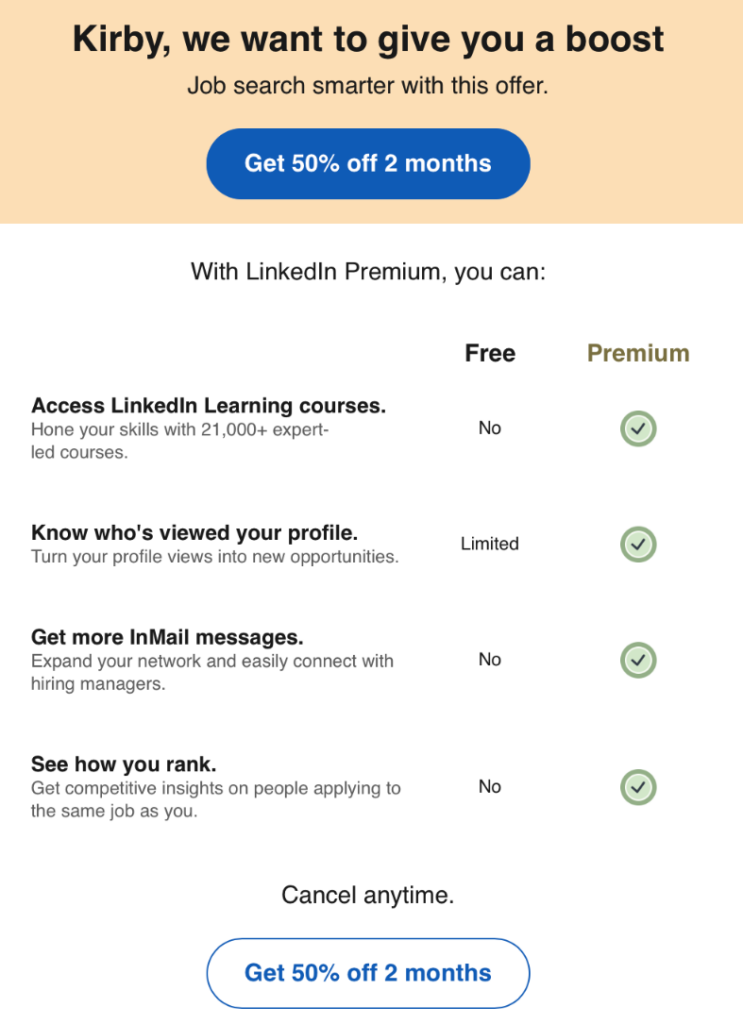
Re-engagement email campaign sequences
All email lists are different, so what works best in one situation may not work so well in another. One message might do the trick, but you could be more effective by sending two or three emails to warm people up and get them re-activated.
Since these subscribers are already less engaged, aim to keep your campaign short. Send an email, wait a few days, and see who’s interacted with your content.
If they’ve clicked through to your content or stated they want to remain on your email list, then great! They can stay on your list and continue to get your awesome emails.
Here are two re-engagement email examples that were sent a few days apart.
This is the first one. Notice how short it is?
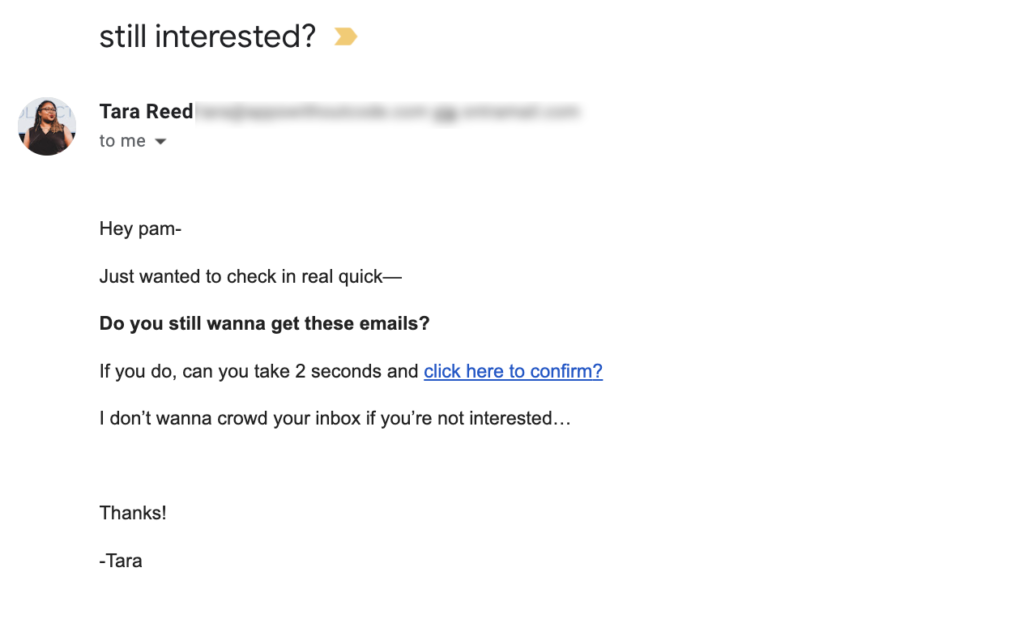
And here’s the next one, sent two days later:

The sequence of emails above is concise, and also respectful. Ultimately, even if subscribers opt not to re-engage, it’s important to consider what they want.
This way, if they develop interest in your products or services at a later date, you haven’t burned any bridges.
Start winning back subscribers with a re-engagement email campaign
If you take the time to craft a re-engagement email campaign, there’s a good chance you can win back some subscribers.
However, if some recipients haven’t responded, it may be time to say goodbye. And that’s perfectly ok!
You’ve done what you can to win them back, but if they don’t want to receive your emails, it’s better to let them go. Not only will they appreciate a cleaner inbox, but it’ll also help boost your email deliverability.
Ultimately, this will improve your email marketing in the long run.
Now, we know that sometimes it can be really hard to write your emails. That’s why we created our What to Write in Your Emails guide and course, complete with 45+ email templates. It will save you hours of work every month.
How do you plan on running a re-engagement campaign of your own? Leave a comment below to share your ideas.
Or, if you already have an AWeber account, watch this video to see exactly how to create and send your own re-engagement emails!
Re-engagement email FAQs
When should you send a re-engagement email?
Many marketing experts recommend that you wait at least three to six months after a subscriber becomes inactive to send a re-engagement email.
However, the proper amount of time can depend on your specific audience.
For example, if your content is time-sensitive or encourages frequent interaction, one to two months may be a better timeline.
You may even consider starting a win-back email campaign during other times.
For example, if you’re planning a major list cleanup, updating your product or service offerings, or notice declining engagement rates, you might want to consider sending re-engagement emails.
Ultimately, it’s key to think about the behavior and preferences of your unique subscribers, and align them with your business goals.
How many emails should you send in a re-engagement campaign?
As we mentioned earlier, there’s no perfect number of messages to send in a re-engagement email campaign.
What works best for your business depends on the preferences of your specific audience.
While sending just one email may be best for some brands, other brands may want to design a sequence of two, three, or even four emails.
So, be sure to test out some different strategies with different segments of your audience. This will help you understand how you can best win back your subscribers.
 87% off ends soon!
87% off ends soon! 
